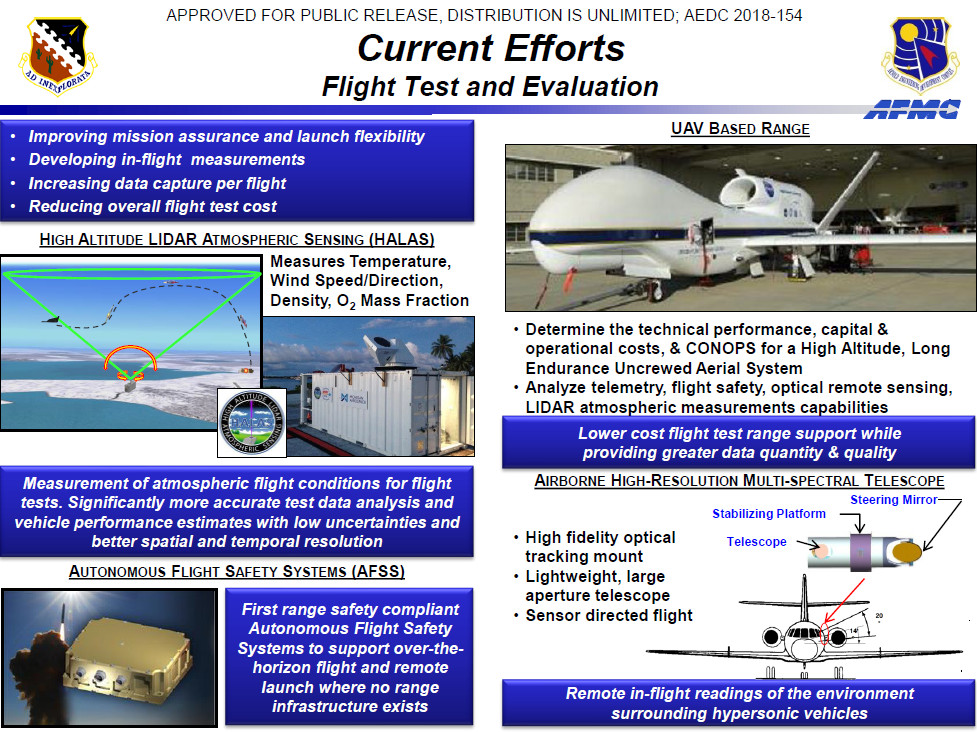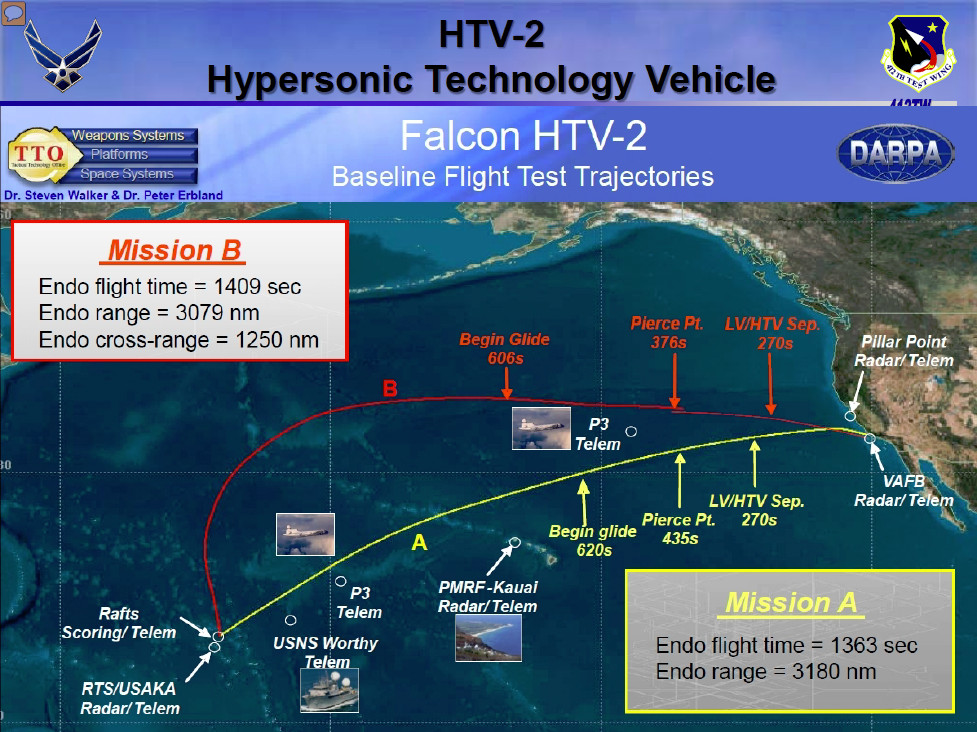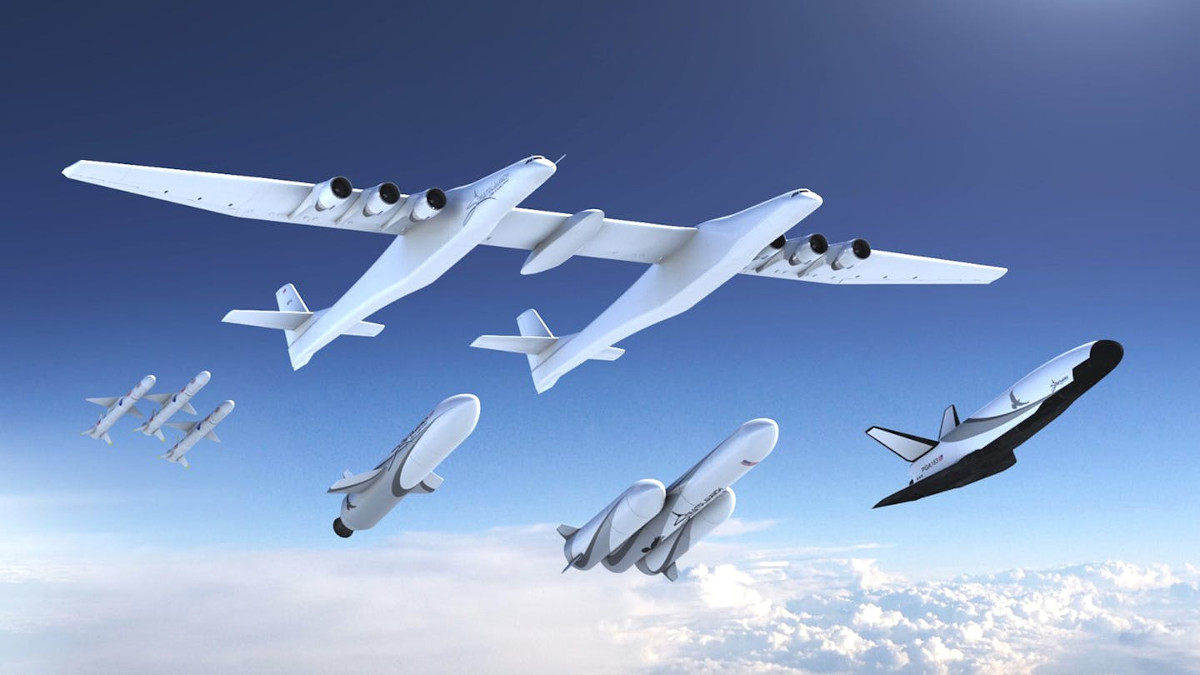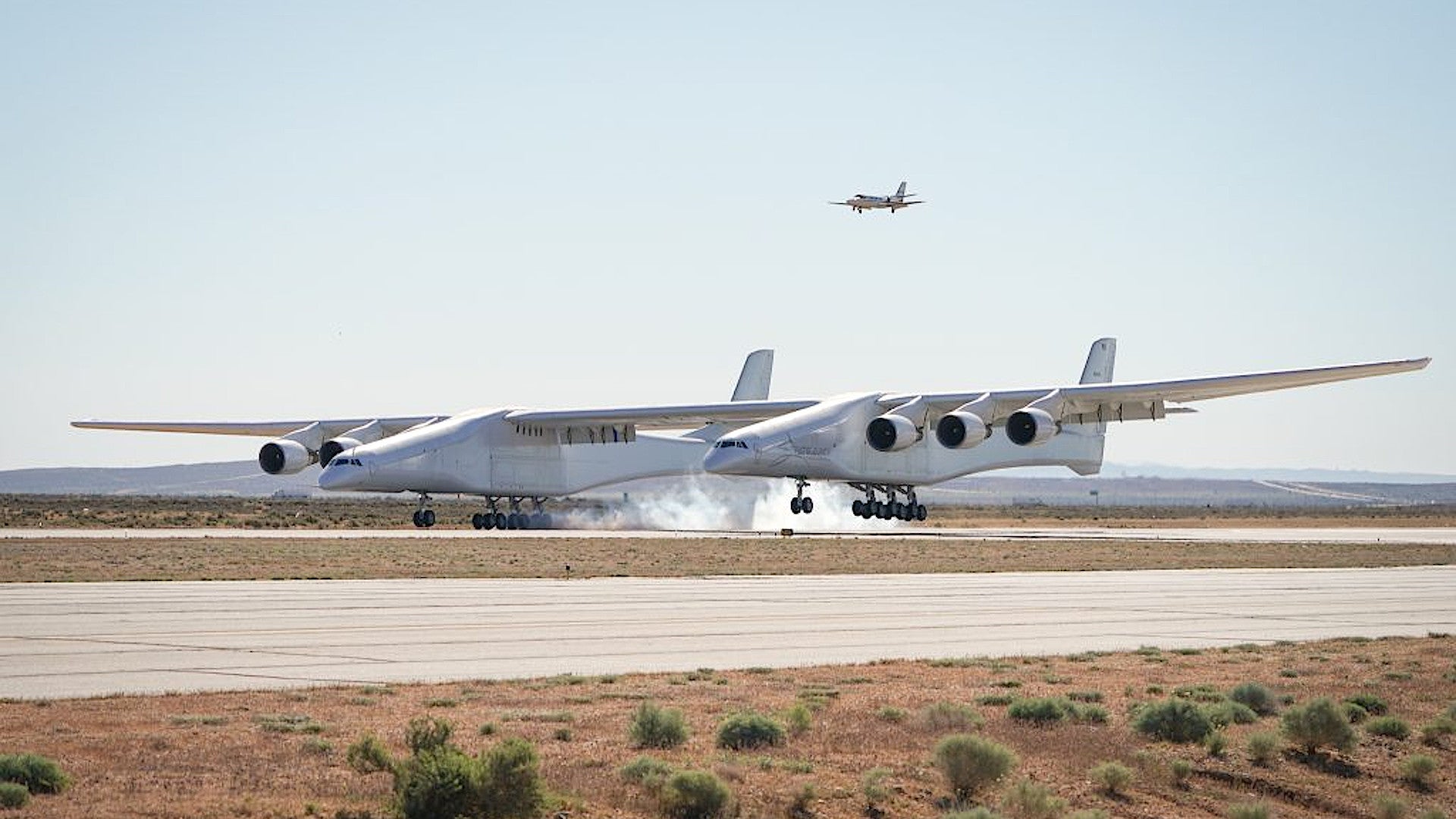New ownership has spared Stratolaunch, the company behind the massive Roc aircraft, the largest plane ever flown, from a sad end following the death of its founder, Microsoft co-founder Paul Allen, last year. The firm now looks set to take a new direction, providing high-speed flight testing services rather than focus on space launch services, amid a boom in hypersonic weapon and aircraft development within the U.S. military, which will likely become a major focus of the Roc’s future activities.
GeekWire
was first to report that Cerberus Capital Management had bought Stratolaunch from the late Paul Allen’s Vulcan, Inc. holding company and that Stratolaunch President and CEO Jean Floyd had announced a new mission statement earlier in December 2019. Reports first emerged that Vulcan had sold Stratolaunch to an unnamed buyer in October. Vulcan, which had already been steadily scaling back the space launch firm’s activities after Allen died, had first put it up for sale in June with a price tag of $400 million, including the Roc, a plane that cost at least $200 million to develop and build alone. Neither Vulcan nor Cerberus has said what the final agreed-upon price was.
“Stratolaunch grew from 13 to 87 employees over the past 2 months,” Stratolaunch’s CEO Floyd said in a Tweet on Dec. 10, 2019. “2020 will be a great year!”
Floyd also indicated a shift away from Stratolaunch’s original focus of providing space launch services using the Roc, which first flew in April, as a mothership to air-launch various vehicles to using that aircraft to support more terrestrial high-speed flight testing. “VISION: Breaking Barriers. MISSION: To be the world’s leading provider of high-speed flight test services,” he added in his Tweet.
Recent job listings at the company’s Mojave flight facility provide additional evidence of this change in direction.
“Stratolaunch is developing an air-launch platform to contribute to high-speed research and development,” a canned statement at the beginning of each current job offering says. “The goal of Stratolaunch is to use the air-launch platform for enabling technologies that may not exist otherwise.”

The company’s new ownership is almost certainly driving this decision. Unlike Paul Allen, who regularly talked about the wonders of space and the future of space travel, Cerberus, and its billionaire owner Steve Feinberg, has long cultivated a more controversial and mercenary image, both figuratively and literally.
Cerberus is a private equity firm that has focused on buying up “distressed” entities, those experiencing serious financial strain or outright in bankruptcy, with the idea of reorganizing them and profiting from their recovery. In the last 20 years, Feinberg’s company has acquired, directly or through subsidiaries, defense contractor DynCorp and gunmakers Remington and Bushmaster, among other enterprises.
Feinberg himself has strong ties to President Donald Trump and his administration. He has been chair of the President’s Intelligence Advisory Board since May 2018.

It’s not clear who Stratolaunch might see as the target customers for its new high-speed flight test services, but Feinberg’s connections, together with the boom in hypersonic weapons and aircraft developments within the U.S. military in recent years, strongly point to the U.S. government being at the top of that list, if it isn’t the only realistic customer. There are at least a half a dozen U.S. hypersonic weapon programs ongoing right now across the services that we know about publicly and it is clear that there are additional efforts taking place in the classified realm. This is to say nothing of the additional work being done on hypersonic aircraft.
This, in turn, has substantially increased the demand for flight test capabilities. Flight tests of the Defense Advanced Research Projects Agency’s Tactical Boost Glide (TBG) and Hypersonic Air-breathing Weapon Concept (HAWC) are scheduled to occur in 2020. These programs both suffered unspecified delays in preparing for these tests, which were supposed to take place this year.
Nearly 40 more hypersonic weapon flight tests are set to occur over the next four years. The speeds, ranges, and flight regimes involved in hypersonic testing also means that, while the U.S. military as a whole has already made significant investments in new infrastructure and the development of new procedures and best practices, it will still need more capacity to keep everything on schedule. It can be a challenge just to track and observe the flights of these vehicles, let alone collect important test data and simply provide adequate physical space to explore the full capabilities that they offer.

Most recently, the U.S. Army laid out plans for a new three-part Hypersonic Test Engineering, Mission Planning and Systems concept, or HyTEMPS. This includes plans for a Portable Range Operations and Test Network (PROTN), a Broad Ocean Area Terminal Sensing System (BOATSS), and a Sky Range.
PROTN envisages a single networked architecture to rapidly share telemetry and other test data, as well as handle communications between participants in particular tests, who might be hundreds or even thousands of miles apart. Since the open expanses of the Pacific Ocean have historically provided the best available space to conduct these kinds of flight tests, BOATSS will provide a distributed array of sensors on crewed ships, barges, and remotely operated vehicles in the air and at sea to gather information across a wide area.

Sky Range focuses specifically on the development telemetry gathering and other testing related systems and the integration of those onto specially configured RQ-4 Global Hawk and MQ-9 Reaper drones, which will be known respectively as Range Hawks and Range Reapers. NASA Global Hawks have already supported previous U.S. military hypersonic weapon testing.
Stratolaunch and the Roc could easily have a role in all this. Many of the benefits of using flying mothership as a two-stage-to-orbit space launch platform are just as applicable for high-speed flight tests. The plane has the ability to launch its payload thousands of miles from where it took off, opening up the possibility of opening up addition flight test corridors. This also means that it can rapidly redeploy to other locations in the event the testing location changes on short notice.
The Roc also has the ability to carry very large and unusually shaped payloads, a capability that may not otherwise be readily available to the U.S. military. The Air Force’s B-52 bombers are presently the go-to option for tests of these kinds of air-launched vehicles, but on a small number of them are dedicated for research and development activities. The Air Force has already begun buying expendable air-launched hypersonic test vehicles, designated X-60As, to provide a less complicated and lower cost option for various basic hypersonic testing, including gathering data on how certain materials and systems hold up to the strain of flying at speeds in excess of Mach 7.

Stratolaunch could potentially leverage existing development work it did on its own family of space launch vehicles with various payload capacities, including a reusable space plane known as Black Ice, to provide additional testing capacity. The firm had announced it had canceled all of those projects in January 2019 and would instead focus solely on getting the Roc ready to launch the relatively small, but proven Northrop Grumman Pegasus XL onto the aircraft. The massive plane was also designed to be able to carry at least three Pegasus XLs at a time, highlighting the potential for it perform multiple test launches at once with smaller vehicles, as well.

Of course, there’s nothing to say that Stratolaunch and the Roc could not also continue to be available for space launch purposes. The United States has a long-standing interest in the development of these capabilities, which you can read about in more detail in these past War Zone stories. The U.S. government’s demands for this kind of capability have only become more pronounced amid increasing demands for flexible and responsive space access to mitigate a variety of emerging threats to American interests in orbit, another topic the War Zone
has covered extensively in the past.
At the same time, the commercial space launch marketplace has become increasingly crowded in recent years. While Stratolaunch had not been targeting the same market share as traditional space launch firms, such as SpaceX, other companies have been exploring two-stage-to-orbit concepts, such as Virgin Orbit. This might have further prompted Stratolaunch’s new management to move away from space launch services.
So, all told, Stratolaunch’s future again looks quite bright. How much its work will reflect the original vision of the late Paul Allen, in the end, remains to be seen.
Contact the author: joe@thedrive.com
